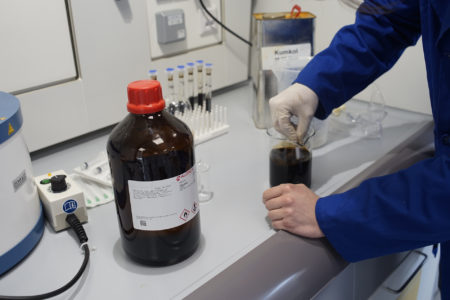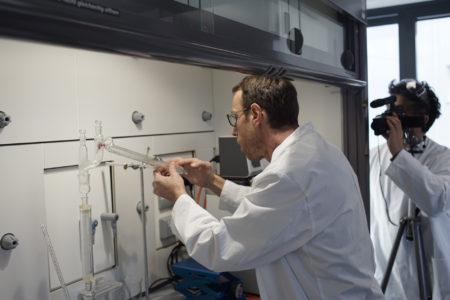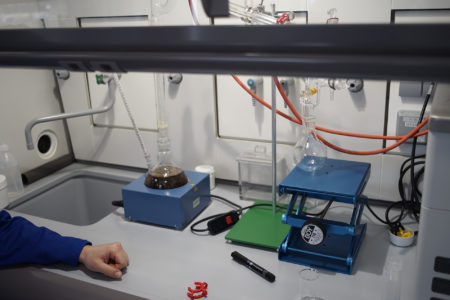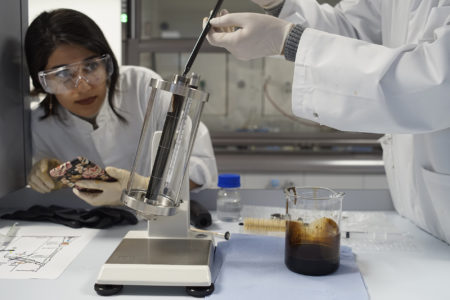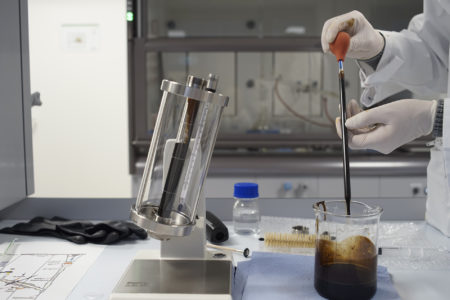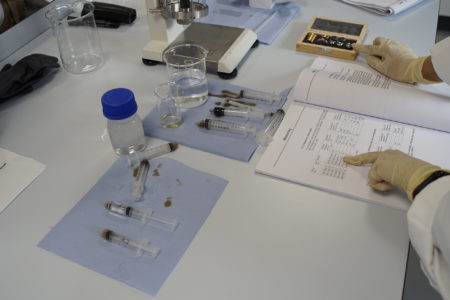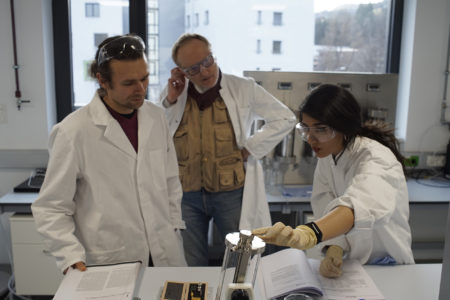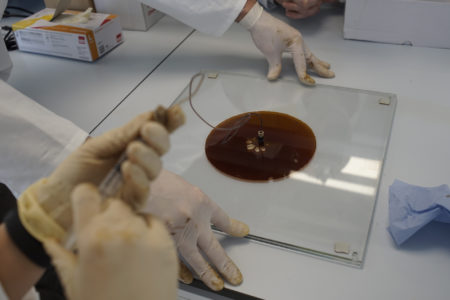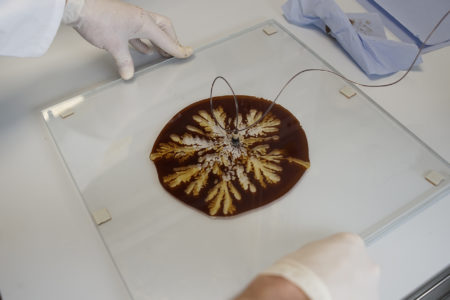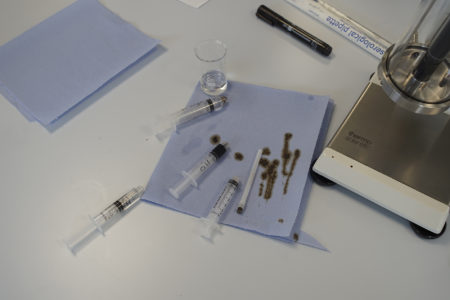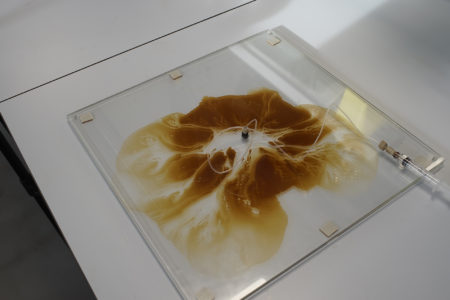Experiment IV, Leoben, 12-13 February 2020
For our second set of experiments in Leoben we were joined by Benjamin Steininger and Leonhard Gruber on the second day, and Benoît Bollon provided filming. Our first experiment was the fractional distillation of crude oil, using Kumkol. Crude oil is composed of many compounds. Increasing its temperature allows to fraction the oil into those smaller compounds. Afterwards we used the falling ball viscometer to measure the oil’s viscosity. On the second day, we undertook a microfluidics experiment to investigate the mobility of oil in relation to other fluids.
For the fractional distillation of crude oil we heated up the Kumkol sample and observed the resulting droplets. The first fraction resulting from the distillation process was observed to be a clear (transparent) fluid. The density, viscosity, specific gravity, and some more physical and chemical properties of the fractional oil are different from the origin black crude oil. Fractioning crude oil leads to a wider range of utilization and higher consumption efficiency. The industry refines crude oil into its fractional compounds to obtain optimum usages, reduce negative impacts on the environment, and increase the efficiency of energy consumption.
We then measured the viscosity of the crude oil using the falling ball viscometer device. The viscosity of each fraction of crude oil as well as a wide range of fluids can be measured using this device. Viscosity is one of the important properties that affect the production of hydrocarbons, significantly altering the type of equipment and handling methods required. Thus, the production of some reservoirs declines significantly due to the increase of oil viscosity. Injecting hot water steam can then help in reducing the viscosity of the reservoir’s oil and thus lower production costs.
For our final, microfluidics experiment we used the Hele Shaw apparatus, two parallel glass plates separated by a very small gap. We injected crude oil, as well as water, octane, ethyl acetate, polymer and detergent to observe the formation patterns. This allowed us to observe the mobility and related properties of crude oil in relation to other fluids. Properties such as interfacial tension and viscosity determine a fluid’s mobility.
experiment I Leoben I fractional distillation I falling ball viscometer I viscosity I microfluidics I efficiency I Hele Shaw apparatus
